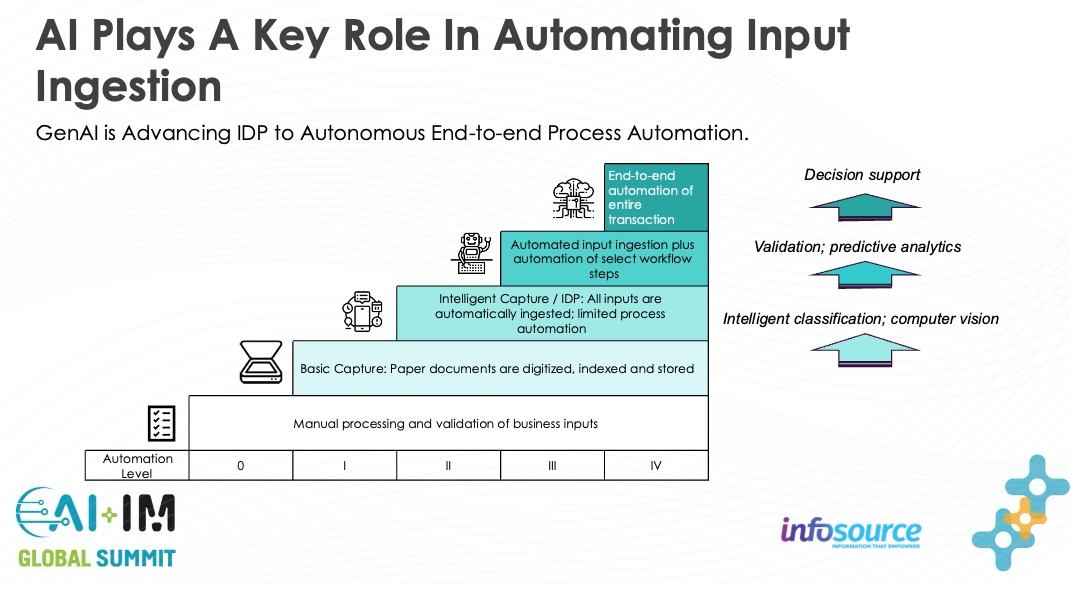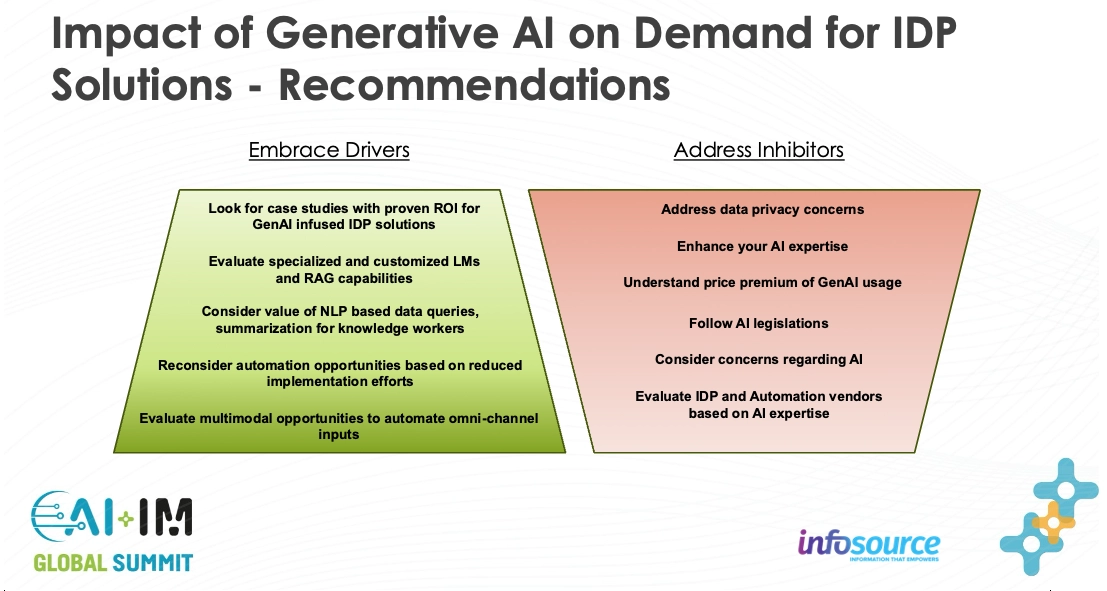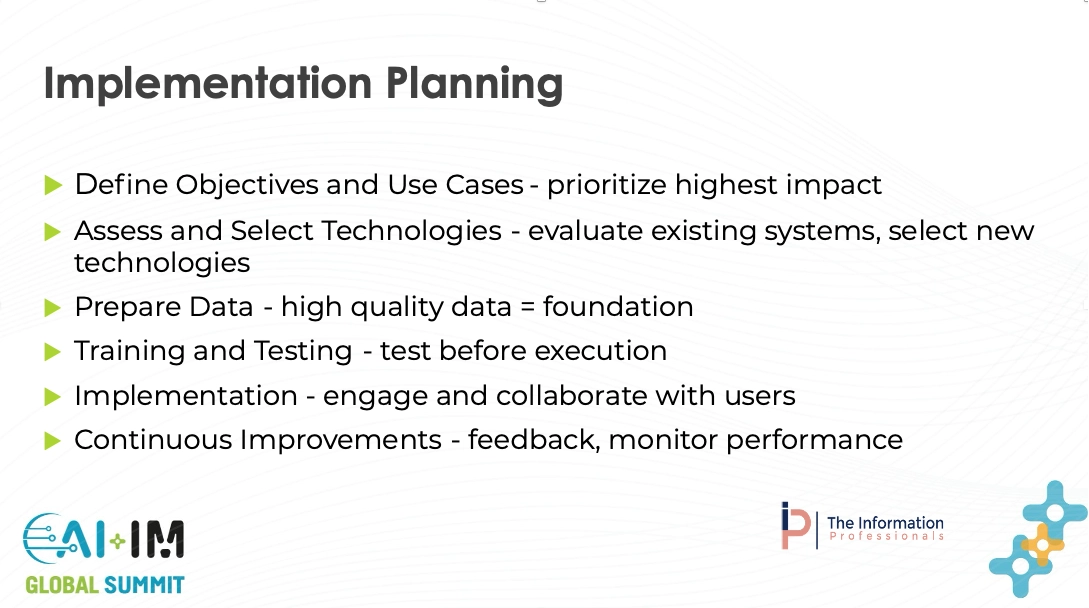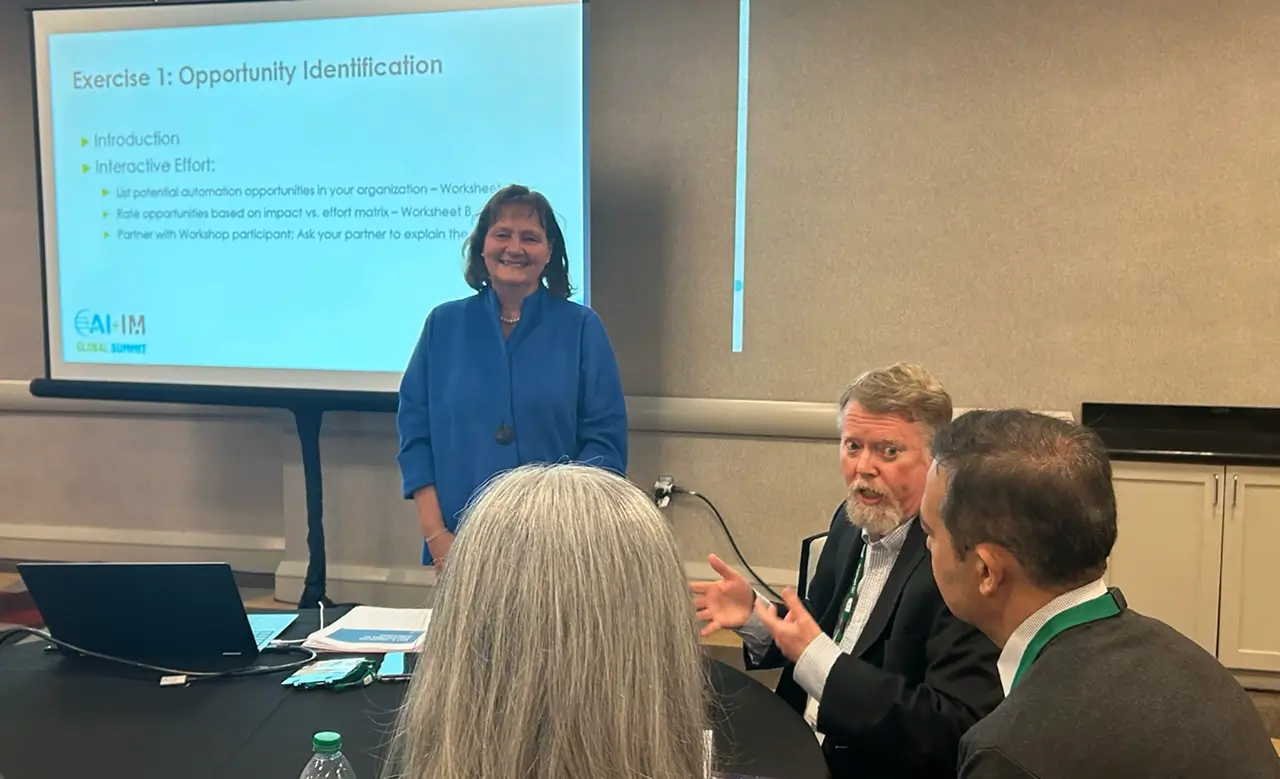Introduction
The recent AI+IM Global Summit, held from March 31st to April 2nd in Atlanta, offered a workshop focusing on the pathway to Intelligent Document Processing (IDP) and AI-powered automation.
Authored by Petra Beck, Senior Industry Analyst at Infosource Software Practice and Nina Carter, President of Information Professionals, the workshop aimed to bridge the gap between strategy and execution.
Strategic Foundation
In the strategic overview Petra offered participants a high-level overview of the current state and future opportunities in the IDP industry.
Petra used her IDP market maturity model to discuss the evolution of IDP solutions, highlighting the transition from manual processing to autonomous end-to-end automation. AI has played a crucial role in enhancing Capture software to Intelligent Capture software in the past. GenAI plays a key role in enhancing IDP solutions and enabling process automation, and decision support.

Despite initial excitement followed by disillusionment due to early-stage solutions and concerns about data privacy and legal requirements, the workshop outlined how technology advances and improved ROIs will eventually outweigh these inhibitors, accelerating the adoption of automation.
Looking ahead, the market is expected to continue expanding, as businesses increasingly adopt AI-driven solutions to improve efficiency and unlock new opportunities. The North American market for IDP solutions is projected to grow to $5 billion by 2028, driven by an 11% compound annual growth rate (CAGR).
The workshop identified two major areas where IDP solutions are expected to have the most significant impact.
- Case Management: Applications such as customer onboarding, loan and mortgage processing, student applications, and social services requests.
- Accounting Applications: Initially focused on accounts payable and invoice processing, evolving into procure-to-pay (P2P) processes integrating order processing and inventory management.
Strategic Recommendations
The workshop participants received recommendations for addressing inhibitors and embracing drivers for GenAI.

Inhibitors such as data privacy concerns, lack of AI expertise, and cultural reservations were addressed with practical recommendations. Participants were encouraged to address data privacy concerns, enhance AI expertise, and, evaluate the price premium associated with GenAI usage, follow AI legislation, address cultural concerns and consider strategic vendor relationships based on their GenAI capabilities.
The workshop also identified drivers for embracing IDP solutions, ROI for GenAI infused IDP solutions, specialized and customized LMs, and ease of implementation. Attendees received recommendations for such as looking for implementation with proven ROI, evaluating vendors based on AI expertise, assessing the value of specialized and customized language models and retrieval-augmented generation (RAG) capabilities. Workshop participants were also asked to consider the value of NLP based data queries, reconsider the automation opportunities based on the lowered implementation efforts and embrace the opportunity to address omnichannel inputs with multimodal opportunities.
Implementation Planning
Nina Carter offered suggestions for the successful implementation of IDP solutions.

Nina emphasized that, like in most projects, starting with a clear definition of the objectives and selecting a specific use case with high impact is important. The selection of technologies is the second key aspect; it is important to start with the requirements and determine to what degree existing solutions can cover these requirements and where new solutions are needed. Another important aspect is to have effective information management practices as AI thrives on good data. Having quality data and the right stakeholders will ensure the required input and support. Once the current processes have been mapped and the data needed has been secured, KPIs can be confirmed, a critical element for training and testing. This is followed by the implementation phase which starts with a pilot project. The full implementation needs to be followed by an effort for continuous Improvement.
The workshop introduced BPMN 2.0 (Business Process Model and Notation) as a user-friendly tool for documenting business processes. BPMN 2.0 provides an intuitive and visual representation of both current and future business processes, facilitating better understanding and communication among stakeholders.
Conclusion
The AI+IM Global Summit Workshop provided a comprehensive roadmap for businesses looking to leverage Intelligent Document Processing and AI-powered automation. By addressing key challenges and opportunities, the workshop equipped participants with the knowledge and tools needed to drive successful implementation and continuous improvement. As the IDP industry continues to evolve, embracing Generative AI technologies will be crucial for achieving autonomous end-to-end automation and unlocking new business potentials.

Petra Beck, Senior Industry Analyst at Infosource Software Practice presenting at the AI+IM Global Summit